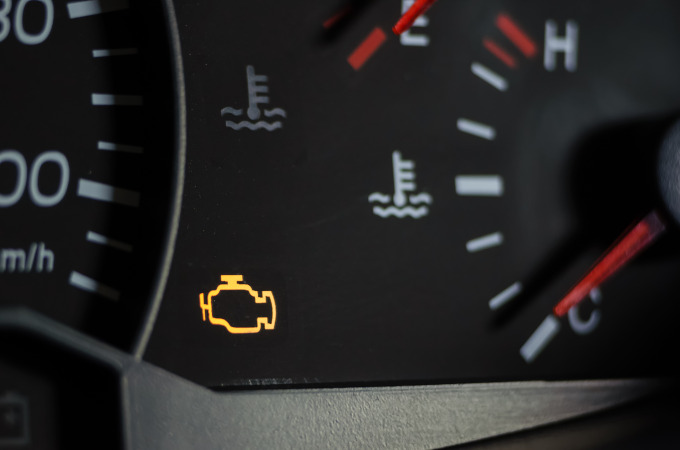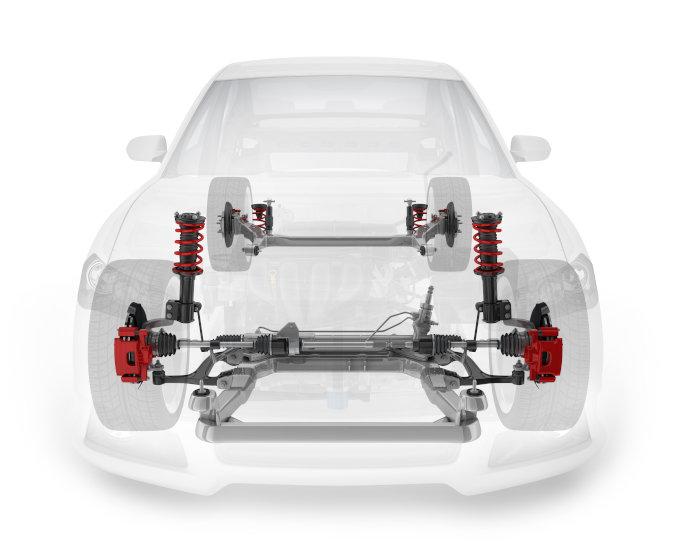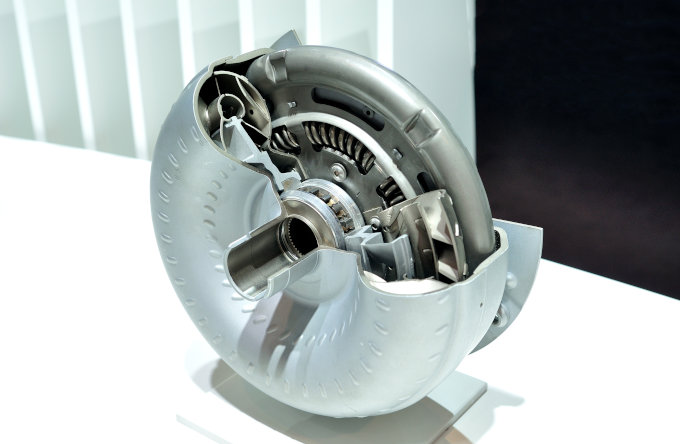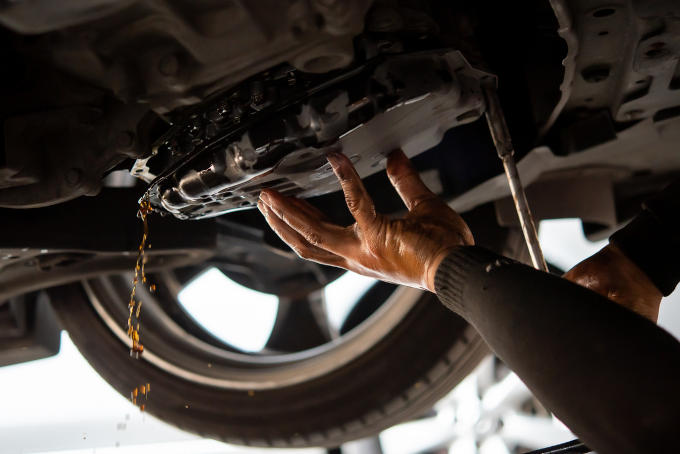A check engine light (CEL), also known as MIL or malfunction indicator lamp, can be a frustrating, worrisome, and confusing sight on your dashboard, but it's essential to understand what it means and what to do when you see it.
The warning light, which is often shaped like an engine, can indicate a wide range of issues with your vehicle, from something as minor as a loose gas cap to something as significant as an engine problem or failing transmission. In this article, we'll take a quick look at what a check engine light might mean and what steps you should take if you see it illuminated on your dashboard.
Your Check Engine Light & OBD-II System
Your check engine light is connected to your vehicle's on-board diagnostics (OBD) system. The OBD-II system monitors various systems and components of your vehicle, such as the engine, transmission, brakes, safety, and emissions control systems.
The OBD-II system detects problems by using computers, sensors, and other diagnostic tools that are strategically placed throughout the vehicle. These computers (or modules) and sensors collect and analyze data to determine if the data matches a set of standard values. If the data does not match the preset value and a problem is detected, the OBD-II system will store a diagnostic trouble code (DTC) and turn on the check engine light to alert the driver.
The OBD-II system is integral to your vehicle's overall performance and safety because it helps ensure various systems and components function correctly. If you see the check engine light on, a professional must check the vehicle out as soon as possible.
The Difference Between a Solid and Flashing CEL
A solid check engine light may not be an urgent threat, but you still have reason to worry. This light may be on because of an untightened gas cap, or it may indicate a problem with the brake system, ignition and fuel system, or even the transmission. You should have your vehicle inspected to diagnose and fix the issue as soon as possible to avoid larger problems and more expensive repairs.
However, a flashing CEL is much more serious. If you see a flashing CEL while driving, avoid driving the vehicle very far, find a reputable repair center, and get it repaired quickly. This condition can put the engine and the transmission into a failsafe mode that limits how far and fast you can drive, allowing you to “limp” the vehicle to a repair center or home. If it becomes unsafe to drive, find a safe location to stop, turn off your vehicle, and call roadside assistance. Never ignore or put off a flashing check engine light.
Reasons Your Check Engine Light Is On
There are a few reasons why your check engine light might be on. Here are some of the most common ones:
1. Loose or missing gas cap.
Your gas cap does more than just keep your gas from splashing out of your tank. It is also an important part of your emission system and holds in harmful gasoline fume emissions from the atmosphere and keeps your entire fuel system in a self-contained, leak-free enclosure. Your onboard computers will periodically check to see if the fuel system will hold pressure and, if not, will turn on the check engine light and set a diagnostic trouble code.
2. Faulty Oxygen Sensors
An essential component of the emissions system, an oxygen sensor measures the quantity of unburned oxygen in the exhaust system. If the oxygen sensor malfunctions, it will cause your check engine light to be illuminated.
3. Transmission Problems
Several transmission problems are linked to a check engine light turning on, such as a problematic transmission valve body and solenoids, slipping clutches, failing torque converter, or overheating transmission fluid. Your transmission is one of the most complex components in your vehicle. If it is discovered that your transmission is at fault for the CEL coming on, it's highly recommended you go to a shop that specializes in transmission repair.
4. Ignition System Problems
The ignition system is responsible for providing the high-energy spark to ignite the fuel in the engine of your vehicle. If it is not working correctly, strongly enough, or at the correct timing, it will cause your check engine light to come on. This could be due to faulty spark plugs, ignition wires, computer issues, or defective or worn-out ignition coil packs.
5. Faulty Mass Airflow Sensors
The mass airflow sensor, also known as the MAS, is prone to the build-up of oil and debris caused by air filters that are not maintained frequently. The mass airflow sensor measures the amount of air that enters your engine. If the sensor becomes dirty or defective, this will affect the air-fuel ratio to the cylinders, which can lead to performance, emission, and fuel economy problems, and can also cause damage to the engine.
6. Faulty Catalytic Converter
The catalytic converter is responsible for reducing the number of pollutants that your vehicle emits. It converts carbon monoxide into carbon dioxide. Failure of a catalytic converter is often caused by an engine misfire, faulty oxygen sensors, bad spark plugs, or other issues within the engine. It can also be a blown-out head gasket, which may cause burned coolant vapor to be pushed into your vehicle's exhaust system—which is one of the main reasons behind a flashing check engine light.
7. Worn Spark Plugs
The spark plugs are responsible for igniting the air/fuel mixture in your engine. So, a weak or worn ignition system may lead to a misfire in the engine, a damaged catalytic converter, and a rise in hydrocarbon emissions. You will also most likely notice a decrease in the performance of your engine and a change in transmission shift timing.
The Importance of Regular Maintenance
Want to help prevent your CEL from coming on? Regular maintenance is the first and best step towards that goal. Here’s why:
- Prevent Major Damage
By routinely inspecting and servicing your vehicle, and not ignoring check engine lights, you can catch minor issues before they become major problems. This can save you time and money down the road. - Keeps You Safe
It is also important for more than just saving money; it protects both you and your vehicle. By performing regular maintenance, you can make sure your vehicle is dependable and running safely and efficiently. - Improves Fuel Efficiency
Regular maintenance has a positive effect on fuel efficiency. Neglecting regular maintenance can decrease fuel efficiency as dirt and other debris build up in the engine. It will eventually reduce the performance of the engine. So, regularly changing the oil, checking the air filter, and replacing the spark plugs can keep your engine running efficiently. - Keeps Your Vehicle in Good Condition
By keeping up with regular maintenance, you can help keep your car in top condition. This can help improve its performance, health, and reliability, saving you time, money, and headaches in the future.
Conclusion
So, it is important to know why your check engine light might be on. And you should take the necessary steps as soon as possible to address the issue. Additionally, if the check engine light is on, it is essential to get it checked by a professional quickly to diagnose any problems and resolve minor issues before they become major headaches.
Check Engine Light On? We Can Help!
AAMCO Knoxville has expert technicians who diagnose and repair your vehicle using the most up-to-date technologies available. With our expertise and knowledge of a wide variety of vehicle makes and models, we can accurately diagnose what is wrong with your vehicle so you can get back on the road safely and without delay. Whether you need a simple tire rotation or transmission repair, AAMCO Knoxville provides impeccable service and repairs backed by a nationwide warranty. Contact us today!











